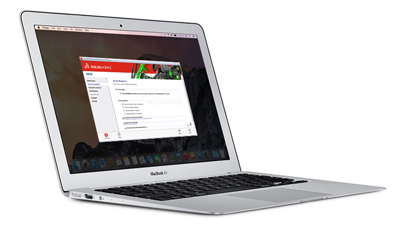MasterChef on Solidworks Performance on the 2013 MacBook Air; MasterChef on Ultrabook options for running Solidworks; Slim New Review on Macbook Air has arrived! Let’s install Windows 7 Pro; Todd on Ultrabook options for running Solidworks; Bharat on Solidworks Performance on the 2013 MacBook Air. Here's what you'll need to install Windows on your Mac: Windows 10.iso file (you can get this from MSDNAA) Click here for the instructions from Apple to run Boot Camp on your Mac. After the process is finished, you will have the option of loading Windows 10 or MacOS on startup. Click here for the steps on installing SolidWorks on Windows. Download new versions, service packs, and add-ins for SOLIDWORKS, Simulation, PDM, and Free CAD Tools (eDrawings, Composer Player, SOLIDWORKS Explorer).
Now that everything I need is installed, I’ll run you through my experience with using Solidworks 2013 on a Mac. Install was pretty straight forward, and as I note…Youtube has a ton of user tutorials on how to install…so check those out if you’re interested. Now you’ll have to bear with me here. I am waiting on a Microsoft mouse to show up in the mail before being able to truly show a real user experience. In the meantime, I have been messing around using the trackpad. Yes, I did look at Trackpad++ and attempted a download, but came across conflicting reviews…including one review from a guy stating that he just used the standard BootCamp drivers to avoid the regular updates Trackpad++ requires. I like a challenge…so Macbook trackpad it is!
Using Solidworks 2013 with a Macbook Trackpad
The first thing I noticed was the lack of a right click. On my home iMac, I set up the lower right corner as that essential secondary click…and did the same with my Magic Mouse. When booting into windows via BootCamp, this right click option just doesn’t come up. As a result, right clicking is accomplished by a two finger click. I don’t mind the two finger click, since it can be done anywhere on the touch surface. If you’re a fan of the scroll wheel, that third mouse button takes a little getting used to not having that as a ready clicking option. Patience…patience my friend. I just started two finger clicking and select that Zoom Pan Rotate option. Remember, this isn’t a performance machine. The Macbook Air is an ultra portable machine with long battery life. Performance comes with weight.
Really these posts should be a bit more polished, but here’s a video to give you a taste.
As a quick synopsis, I outline the operating specs as Windows 7 reads the mid 2013 Macbook i7 Haswell processor. You can see the 8GB of RAM I am running as well. This 8GB I have found to been essential for Solidworks stability.
Solidworks Macbook Pro
SW2013 is loaded up, and I pull up a simple part with a complex swept cut. Lots of relations. I rotate the part, using the trackpad and some secondary clicking, and then go into editing the path for the swept cut.
There is some definite lag as the surface rebuilds, but this is an abnormally complex surface. If you’re looking to do regular work like this labyrinth, you might want to just stick with a high powered desktop. Cheaper and you’ll get more power. For my purposes, this does seem to be sufficient processing power. Large and complex assemblies will need to be demonstrated next. That will take me a little time though since I’ll need to chip away at creating a bunch of parts for you to critique.
Drawings will also be part of new posts. Drawings are pretty straight forward though, and it would be interesting to see how these labyrinths show in the drawing templates.
Early thoughts? Yes, you can run Solidworks 2013 on a Macbook Air. As for what you want to model for complexity, you already know that the the more intricate the part, the slower the processing will be. Solidworks should really make a lightweight version to make it easier on these ultrabook processors.
Solidworks For Macbook
Gordon

